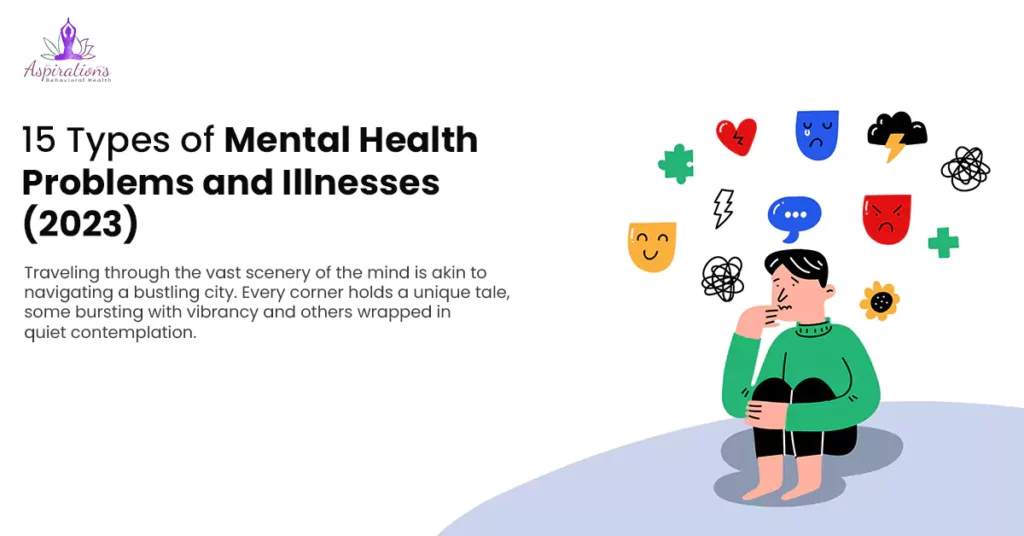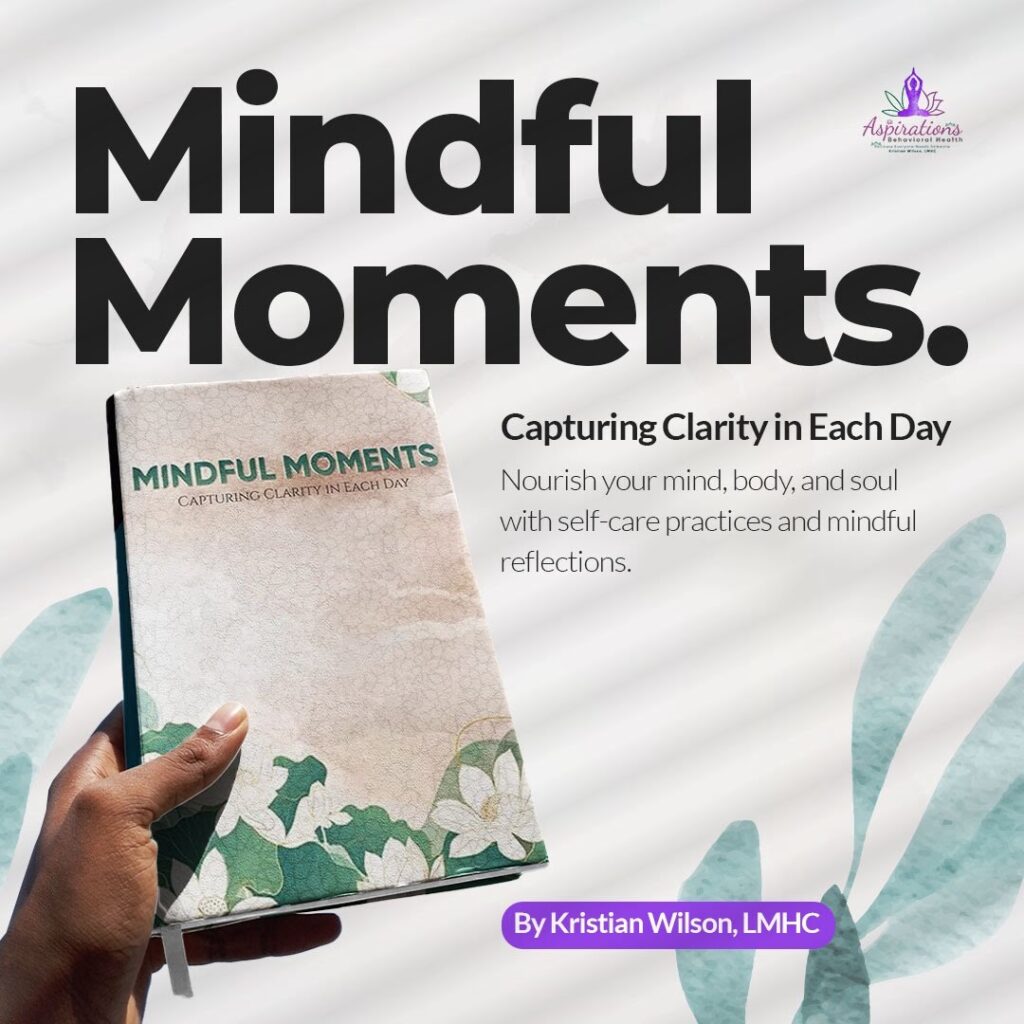Traveling through the vast scenery of the mind is akin to navigating a bustling city. Every corner holds a unique tale, some bursting with vibrancy and others wrapped in quiet contemplation.
Our emotional and mental health is a rich tapestry woven from countless threads — from the sunlit squares of daily emotions to the shadowed alleys of the worst mental disorders.
Join me as we journey into 15 Types of Mental Health Problems and Illnesses that touch souls globally. To understand is to nurture kindness, and awareness guides us toward healing.
Summary
The article provides a detailed exploration of 15 types of mental health problems and illnesses, likening the intricacies of the mind to navigating a bustling city. It distinguishes between mental illness and disorder and then delves into specific conditions, from anxiety disorders to PTSD, offering brief, relatable descriptions for each. Additionally, it discusses diagnosis methods, emphasizes the importance of early intervention, and lists six treatments for mental health challenges, highlighting the benefits of the online platform “Aspirations Behavioral Health.” Key 2023 mental health statistics are also shared. The piece concludes with a call for understanding, compassion, and collective support.
Look at The 15 Most Common Mental health Illnesses
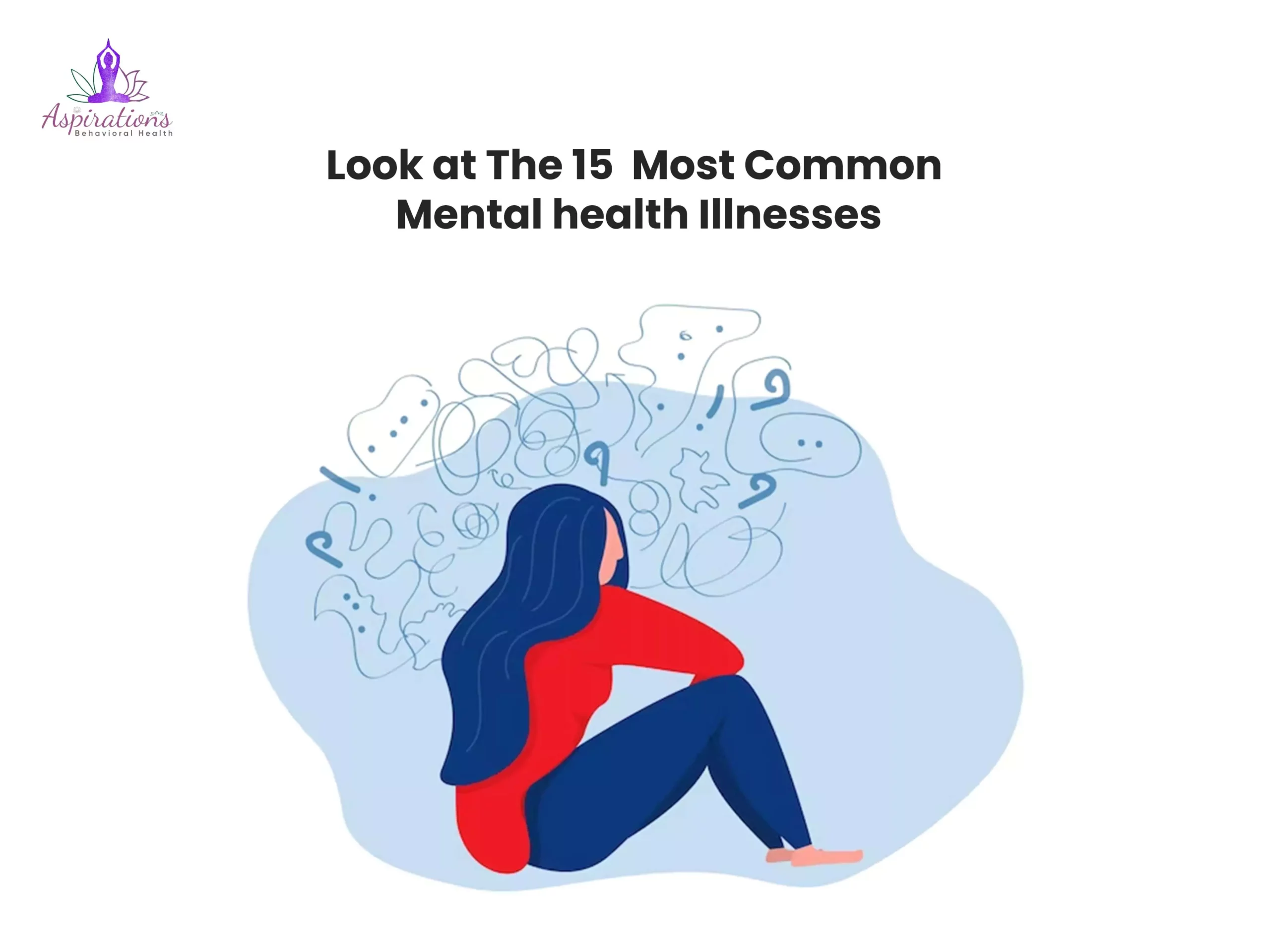
Understanding the difference between illness and disorder is essential to cure your condition appropriately. Illness is a general term for any situation that affects the body’s normal functioning. In comparison, a disorder is a specific pattern of abnormal behavior or structure, often caused by genetic, environmental, and psychological factors.
1. Anxiety disorders
Anxiety Disorders – Do you ever feel like a dog chasing its tail, constantly worried about everything? That’s anxiety for you! From generalized anxiety disorder to panic disorders, it’s a whirlwind of racing thoughts and relentless stress. Take a deep breath, and let’s dive into the world of anxiety disorders!
2. Depression

Depression is among the top 10 most common mental disorders in every other person nowadays. A mood disorder is characterized by persistent sadness, loss of interest, and hopelessness. It affects one’s daily activities and can lead to various physical and emotional problems if not addressed.
3. Schizophrenia
Symptoms like hallucinations, delusions, and disordered thoughts mark a chronic mental health condition, schizophrenia. This makes it difficult for affected individuals to discern between reality and their perceptions. While challenging to manage, treatments and therapies can improve one’s quality of life.
4. Body dysmorphic disorder (BDD)
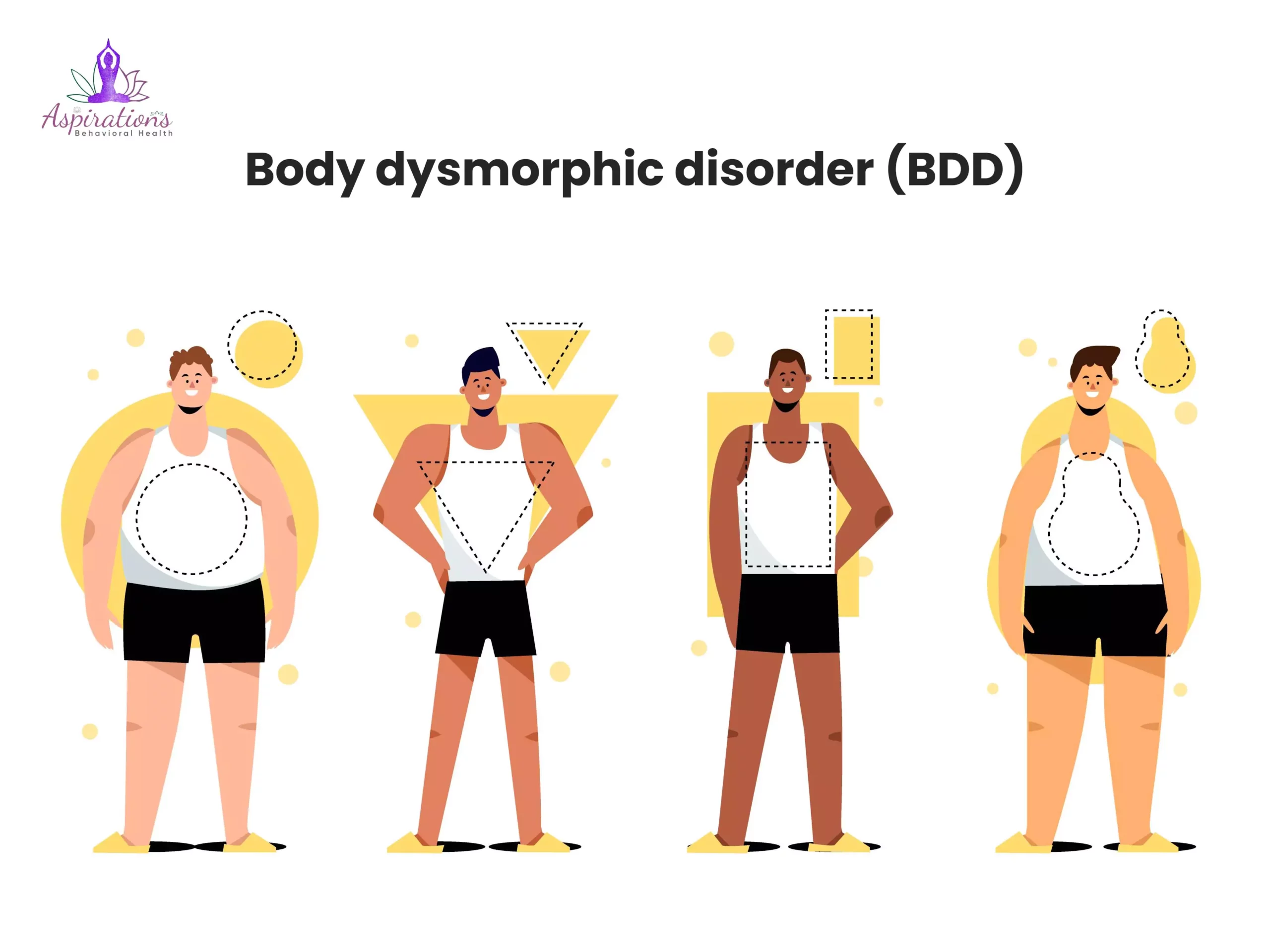
BDD is an anxiety disorder characterized by an obsessive focus on perceived physical flaws. Individuals with BDD might spend hours scrutinizing their appearance or seeking multiple cosmetic procedures. The condition can severely affect self-worth and lead to social isolation.
5. Behavioural and emotional disorders in children
Disorders in this category include conditions like ADHD, oppositional defiant disorder, and conduct disorders. They are characterized by behaviors that deviate from age-appropriate norms, often causing disruptions in learning environments and strained interpersonal relationships. You may find a guide focusing on what should parents do to improve their kids’ mental health helpful in reducing these issues.
6. Substance use disorders
Characterized by an overwhelming compulsion to consume substances like drugs or alcohol, substance use disorders can erode physical health, relationships, and professional life. Over time, increased tolerance may lead to higher consumption, deepening dependency.
7. Borderline personality disorder (BPD)

BPD is a complex condition that results in mood instability, distorted self-image, and impulsive behaviors. Individuals with BPD often experience tumultuous relationships due to intense fear of abandonment and frequent mood shifts. You may get rid of this uncomfortable feeling by having your hands on ABH’s individual consultation coaching.
8. Mood Disorders
1 in 10 people experience mood disorders. Depression & bipolar disorder fall under this category. Ups and downs, highs and lows – mood disorders take you on a thrilling, emotional roller coaster. But hang in there; help is available!
9. Eating disorders
These conditions, including anorexia nervosa, bulimia nervosa, and binge eating disorder, manifest as severe disturbances in eating behaviors and self-perception. Rooted in a complex interplay of biological, psychological, and social factors, they can lead to serious physical complications.
10. Hypomania and mania
These are mood states associated with bipolar disorder. Hypomania is characterized by elevated mood and increased activity levels, while mania is more intense, potentially leading to a detachment from reality. Both states can impact decision-making and overall functionality.
11. Obsessive-compulsive disorder (OCD)

Obsessive-Compulsive Disorder (OCD) is about experiencing intrusive thoughts and engaging in repetitive behaviors to ease anxiety. It’s like fighting a never-ending battle with your mind. Cleaning, checking, counting, and arranging become your new hobbies, but trust me; they’re not as fun as they sound. OCD can be a real party pooper!
12. Panic attacks
Intense surges of fear and anxiety panic attacks can manifest suddenly, causing symptoms like palpitations, sweating, and trembling. Though short-lived, they can significantly disrupt an individual’s sense of security, potentially leading to avoidance behaviors.
13. Schizophrenia
A severe disorder impacting cognitive functions, schizophrenia can drastically alter one’s perception of reality. It often presents in early adulthood and can lead to chronic symptoms. Many individuals can lead fulfilling lives with a combination of medications and therapies.
14. Seasonal affective disorder (SAD)
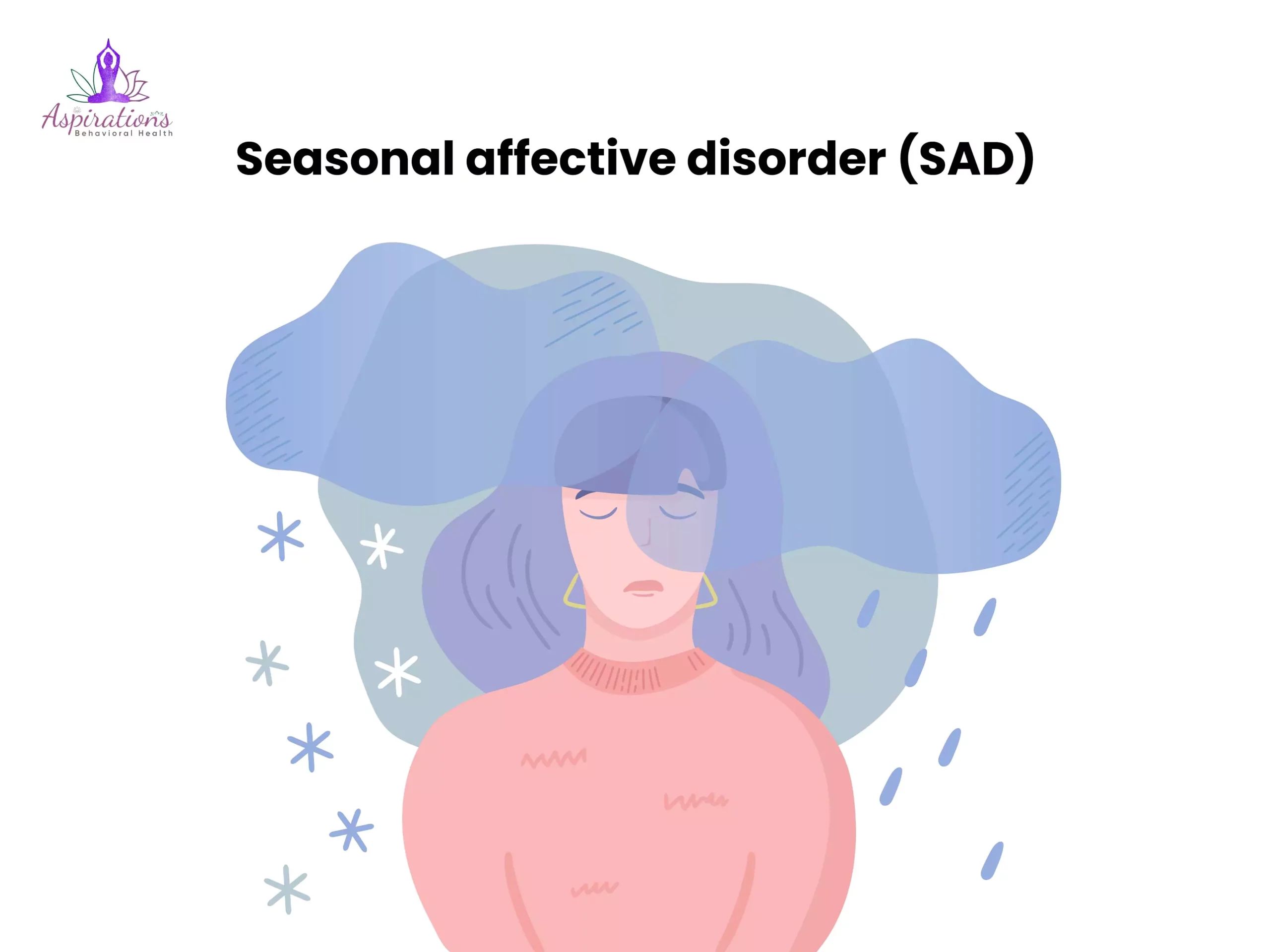
SAD is a type of depression linked to seasonal changes, typically surfacing in late fall and continuing through winter. Reduced sunlight can lead to feelings of sadness, fatigue, and weight gain. Light therapy, among other treatments, can be beneficial.
15. Post-traumatic stress disorder (PTSD)
Post-Traumatic Stress Disorder, commonly known as PTSD, is a mental health condition after experiencing or witnessing a traumatic event. Symptoms can include flashbacks, nightmares, and anxiety. It’s not a walk in the park, but you know what they say – “What doesn’t kill you gives you PTSD!” Just kidding. But earnestly, if you’re struggling with PTSD, seek help and know you’re not alone. Stay strong!
Mental Health Symptoms Checklist

- Feeling down or blue for prolonged periods without any apparent reason.
- Constantly anxious or fearing specific situations or objects disproportionately.
- Rapid and intense shifts from happiness to sadness or vice versa; signs of possible bipolar disorder.
- Avoiding friends, family, and activities that were previously enjoyed.
- Significant weight loss or gain, or patterns of bingeing and purging.
- Insomnia, oversleeping, or waking up multiple times during the night.
- Struggling with tasks that used to be manageable.
- Reacting to situations with disproportionate anger or getting frustrated easily.
- Having frequent thoughts about harming oneself or ending one’s life.
- Experiencing headaches, stomachaches, or other physical discomforts without a clear medical cause.
Diagnosis for Mental Health Illnesses
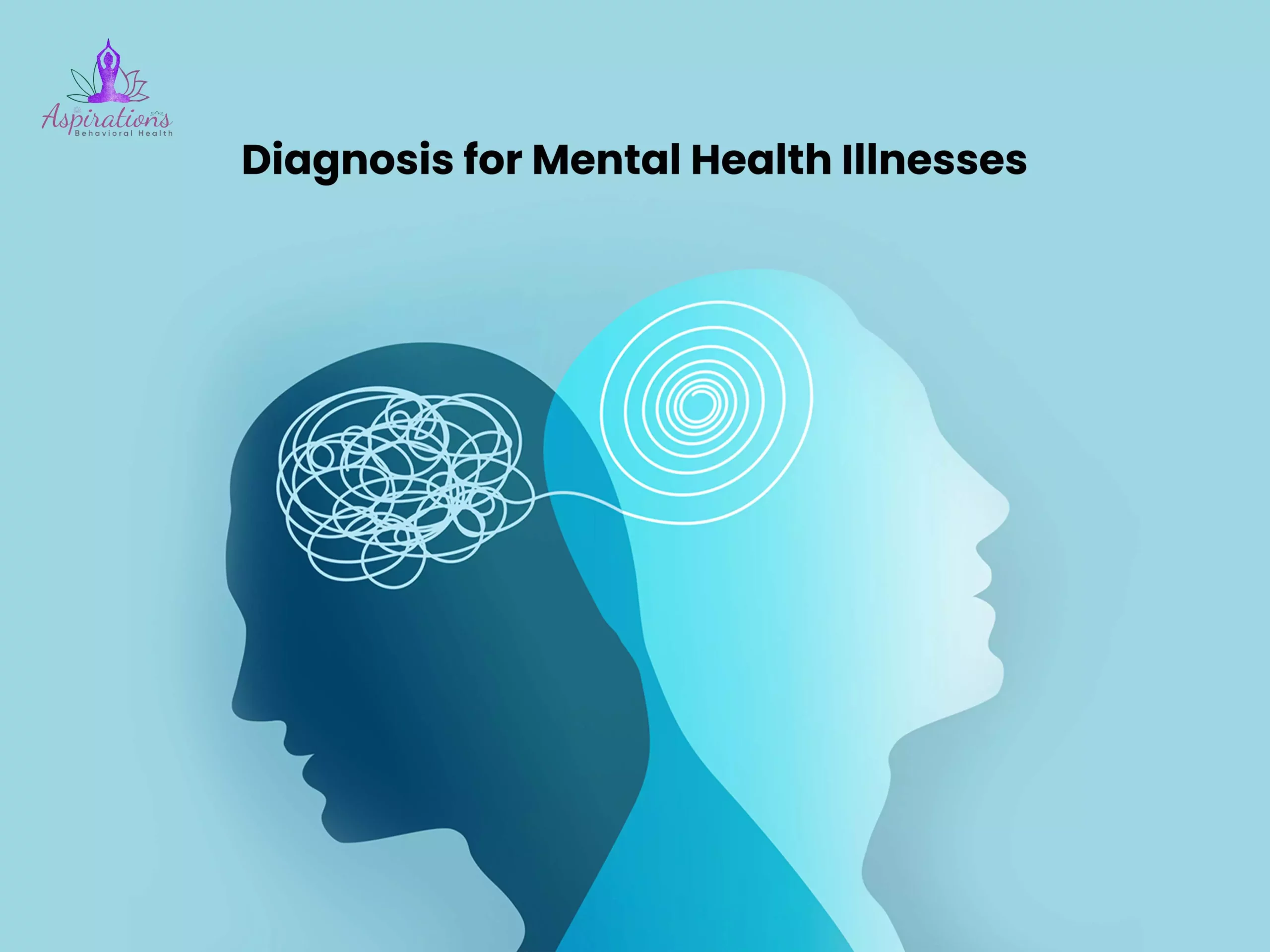
A mental illness diagnosis is crucial in getting the right care and improving a person’s life. Unlike many physical illnesses, there aren’t always straightforward ways to diagnose mental diseases, like blood tests or imaging.
Instead, doctors rely on thorough evaluations that include finding out how long a patient’s symptoms have been going on, how bad they are, and how they affect the person’s daily life. This includes observations, clinical conversations, and standardized assessment tools.
It is also essential to consider any physical health problems, medicines, or substances affecting mental health. Also, working with family or close friends can give you helpful information. Because mental health is complex, a correct diagnosis often requires a “holistic” approach that looks at the person and their surroundings.
6 Treatments for Mental Health Illnesses

Some treatments offer solace for mental health illnesses. Navigating these waters can be complex, but with the proper guidance, we can find the anchors that ground us. Let’s explore the healing journeys that promise serene shores ahead.
1. Psychotherapy
Psychotherapy, or “talk therapy,” is when a person talks to a psychologist about feelings, thoughts, and actions. Different types of therapy, like Cognitive Behavioral Therapy (CBT) and Dialectical Behavioral Therapy (DBT), are designed to help with different problems. Psychotherapy can help people learn about their sickness, find ways to deal with it and set improvement goals.
2. Medication
Some mental illnesses can be helped by taking psychotropic drugs. Some drugs are antidepressants, mood stabilizers, antipsychotics, and drugs that make you less anxious. The proper treatment, dose, and length of time are different for each person, and a psychiatrist needs to monitor them regularly to ensure they work and keep side effects to a minimum.
3. Support groups
These give people a place to talk about their problems and how they deal with them. People who join a support group, either in person or online, can feel less alone and learn from others who are going through similar problems. Groups run by people who have been through it can give first-hand information and valuable ways to deal with it.
4. Self-help
Mindfulness, meditation, exercise, and a healthy, balanced diet can all be vital for mental health. People can get more information and tools for self-management by reading books, doing hobbies, or looking at online resources. making up a daily routine, getting a good night’s sleep, and making limits can also help improve mental health.
5. Hospitalization
People may need to go to the hospital in an emergency if they are a danger to themselves or others. Hospitals and specialized psychiatric facilities offer a safe place to stay, quick treatment, and medication. These stays may be short for stabilization, but they may be longer for urgent care.
6. Electroconvulsive therapy (ECT)
ECT is a medical process in which electrical currents are sent through the brain in a controlled way. ECT is often used to help people with severe depression, mania, or catatonia who don’t get better with other treatments. It can help you get better quickly. It is done with general sedation, and even though it works, memory problems could be a side effect.
Why Aspirations Behavioral Health Best for Mental Health Problems
Are you also confused and disturbed in your life making big decisions? Choosing an online platform for addressing mental health problems can offer numerous advantages. Aspirations Behavioral Health is here to help you as we provide safer and more effective telehealth therapy. If you live in a remote area or lack transportation, online platforms eliminate geographical barriers, making professional help accessible from anywhere.
No matter where you are, you can access expert therapists and counselors with just a click, ensuring that help is always at hand. Schedule sessions at your convenience, making fitting therapy into your routine more manageable.
Our platform hosts a range of specialists catering to various mental health issues, ensuring you find the right fit for your concerns. Book your slot now before life takes you to the point of no looking back.
Aspirations Behavioral Health offers a wide range of services, including:
Online Marriage Counseling
Online Family Therapy
Online Individual Consultation And Coaching
Online Child And Adolescent Therapy
Mental Health Problems FAQs:
What are the mental health facts for 2023?
Mental health is integral to overall well-being. Globally, around 1 in 4, people will experience a mental health issue in their lifetime. Depression is a leading cause of disability, while suicide ranks among young people’s top causes of death. Stigma remains a barrier, but awareness and treatments are increasing.
How many people in the world suffer from mental illness in 2023?
Approximately 1 in 4 people globally will eventually experience a mental health disorder. This translates to nearly 2 billion people based on current world population figures. Conditions range from anxiety and depression to more severe disorders like schizophrenia and bipolar disorder. Early intervention is crucial.
What percentage of students have mental health issues in 2023?
It is thought that 1 in 7 (10–19-year-olds), or 14%, have mental health problems, but most of these go unnoticed and unchecked. Teenagers with mental health problems are especially likely to face social exclusion, discrimination, stigma (which makes them less likely to ask for help), school problems, risk-taking behaviors, physical illness, and violations of their human rights.
What mental health trends to watch in 2023?
As mental health continues to become a popular and pressing topic of conversation, you must follow some mental health trends in 2023. These include applying and maintaining healthy boundaries, exercising and meditating regularly, and adding healthier foods to your diet. Moreover, in some severe cases, people prefer to consult telehealth therapy.
What are the statistics for depression in 2023?
Globally, an estimated 280 million people suffer from depression. In the United States, 21% of adults (52.9 million) experience a mental health condition. About 16.39% of youth (aged 12-17) reported suffering from at least one major depressive episode (MDE) in the past year. Women are twice as likely as men to experience depression.
Final Words
As we close this chapter on the intricate tapestry of the mind, remember: understanding these 15 types of mental health challenges is a stride towards compassion and self-awareness. Each story, each struggle, is a reminder of our shared humanity.
Let’s continue to support, learn, and grow together, ensuring everyone finds their path to well-being. Here’s to a world where mental health is embraced, understood, and nurtured!


